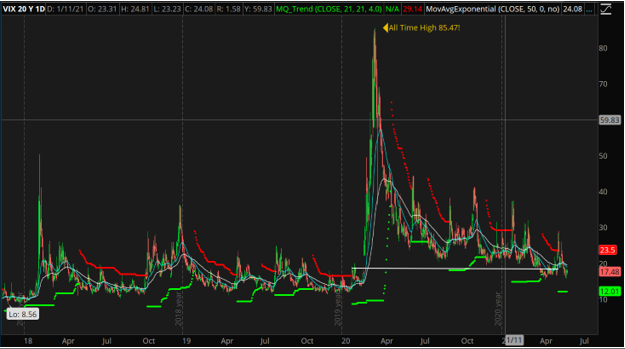COVID-19 and the havoc it has created in world economies is unlike anything we have seen before. Yet when we look at the stock market charts they continue to go up.
We have bad jobs data—the markets respond and go up. We have poor CPI—the markets go up. The housing data misses—the markets go up.
It is like bouncing off Teflon. What used to cause rifts in the markets now cause the opposite. In this upside-down world, this has become the norm.
Since Mar. 18, 2020 until now we have had the following gains:
- S&P – 71% increase
- NASDAQ – 97% increase
- Russell – 90% increase
- Dow – 64% increase
- Silver – 120% increase
- Gold – 50% increase
- Bitcoin – 385% (was as high as 767%)

So, we ask how in the heck is this happening? How can it be that the markets respond in a positive way to the bad economic news? The continued slow economic recovery. The largest debt this world has ever seen. What on this earth is fueling all this? It took me a while to figure it out, but it is simple.
In short, these markets like the bad news because it forces quantitative easing and keeps interest rates down. This is akin to the Fed hitting the gas on the economy while driving on a sheet of ice.
Most would expect the Fed to proceed with caution, but instead, they are going for broke. So, every time we see bad numbers the markets respond positively, and bad news is good news. We have seen this since the breakdown of the markets in March of 2020 and it has continued.
The problem is that we are creating another bubble and when that finally bursts, we are going to have to move fast and furious. Nobody knows when that will be—next week, next month, or a year from now. All we can do as traders is to be cautious and execute trades that have defined risk.
Take a look at the most recent recession in 2020—where we saw the VIX climb as high as 85. At that price, the market is expecting extreme risk. Ultimately, the VIX is the industry standard to help traders and investors have a standardized view of market risk through implied volatility.

The VIX is useful because it can give us a hint at what the market is expecting since it is an example of implied volatility (IV). Typically, IV is derived using an options pricing model, such as the Black–Scholes. Using these models, the theoretical value of an option can help guide us to the measurement of implied volatility at a particular point in time.
Traders and investors can use IV to find attractive options trades to hedge, enter or exit a position, or to speculate on a future outcome in the market.
Historical Volatility
While the VIX is a measure of implied volatility, there are many historical measures of volatility that can be useful. One common example is the beta coefficient. This is a historical calculation measured by taking the returns associated with a security and comparing that with the price action of the market over the same time period.
A security with a beta less than 1 implies that the security is theoretically less volatile than the market as a whole. A security with a beta greater than 1 would be more volatile than the market.
For those that want to have a full picture of the risk of a security, the beta coefficient can help separate market risk with individual security risk. These types of measures can help you diversify properly with respect to your individual risk tolerance.
A historical volatility calculation like beta gives you a basic understanding of what the price of a security has done in the past. While past performance is not indicative of future results, historical volatility calculations can be used to help measure risk and ultimately help determine if a security is right for you.
The Volatility Of The Volatility
To further confuse new traders, there is such a thing called the volatility of the volatility or a.k.a. the VIX of the VIX (VVIX). No this is not an exercise on doublespeak, if you are a reader you would have seen me talk about this before. The VVIX is simply a measure of the change of volatility in the VIX volatility index.
The VVIX is the VIX of the VIX like the VIX is the VIX of stocks. Ok if you are not thoroughly confused by now then congrats because this stuff can get pretty confusing. Another way to put it is, the VVIX measures how rapidly S&P 500 volatility changes, and is thus a measure of the volatility of the index. Investors can use the VVIX and its derivatives to hedge against volatility swings on changes in the VIX options market. You can hedge the hedge!
Why You Shouldn’t Be Afraid Of Volatility
All told, volatility is just a measurement that can give you insight into the potential risk of a security. It’s important to remember that actual volatility is almost always less than implied volatility. No measure of risk is going to be totally accurate, anything can happen in the financial markets. Even so, volatility measurements can offer a clear view of the risk the market expects.
